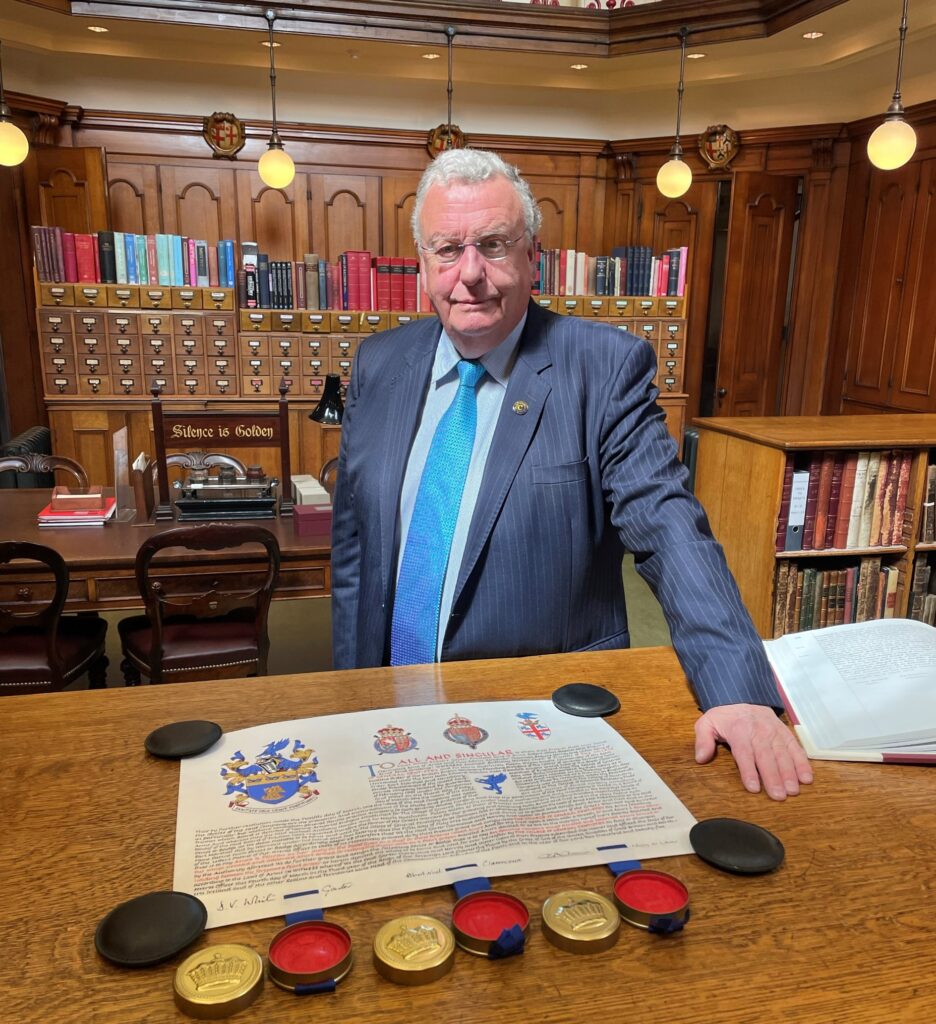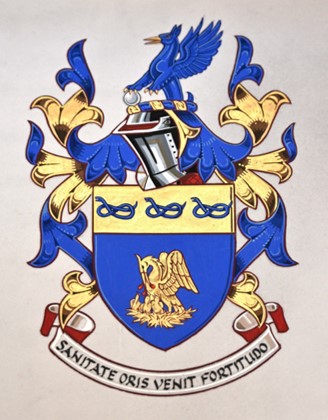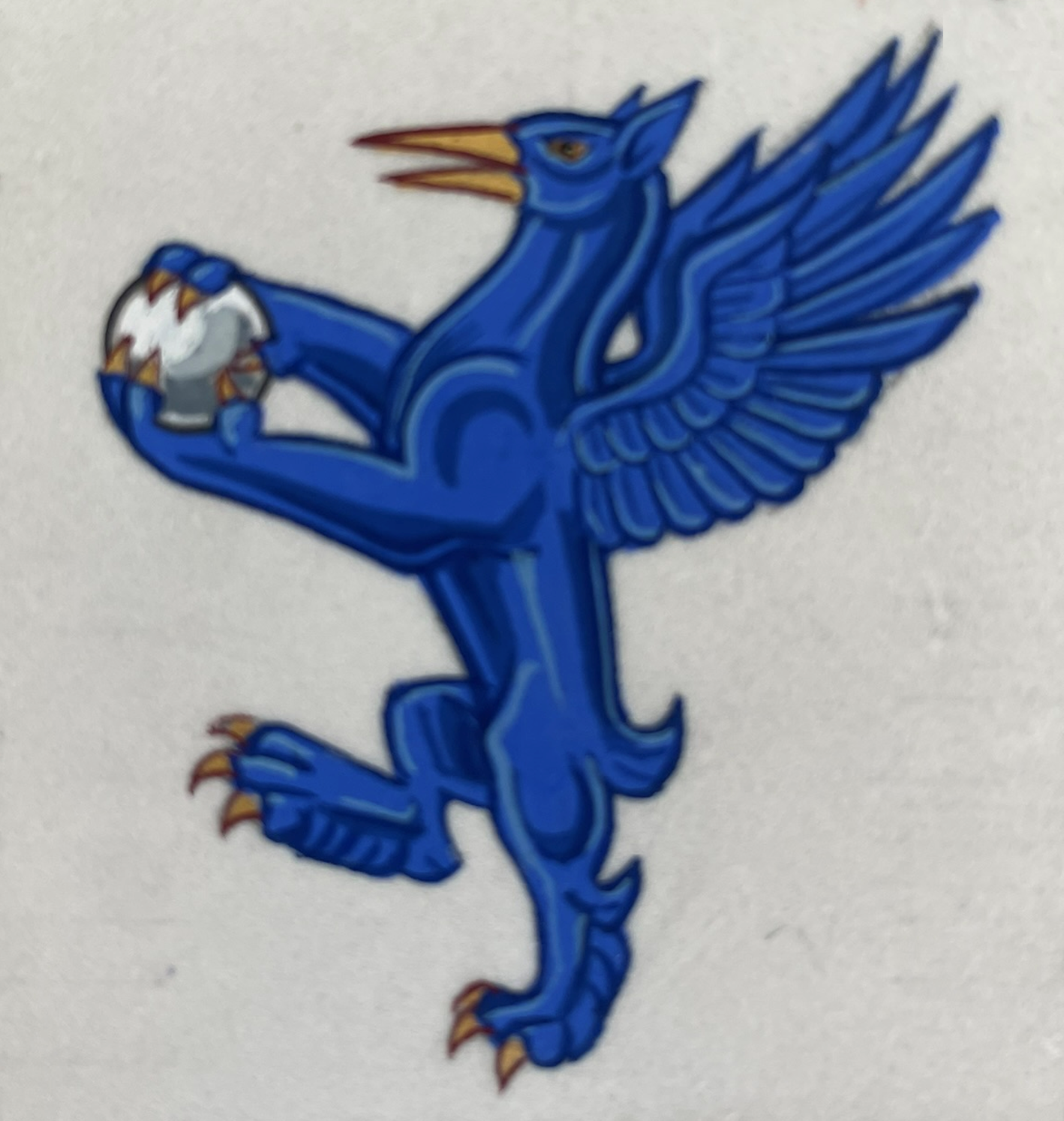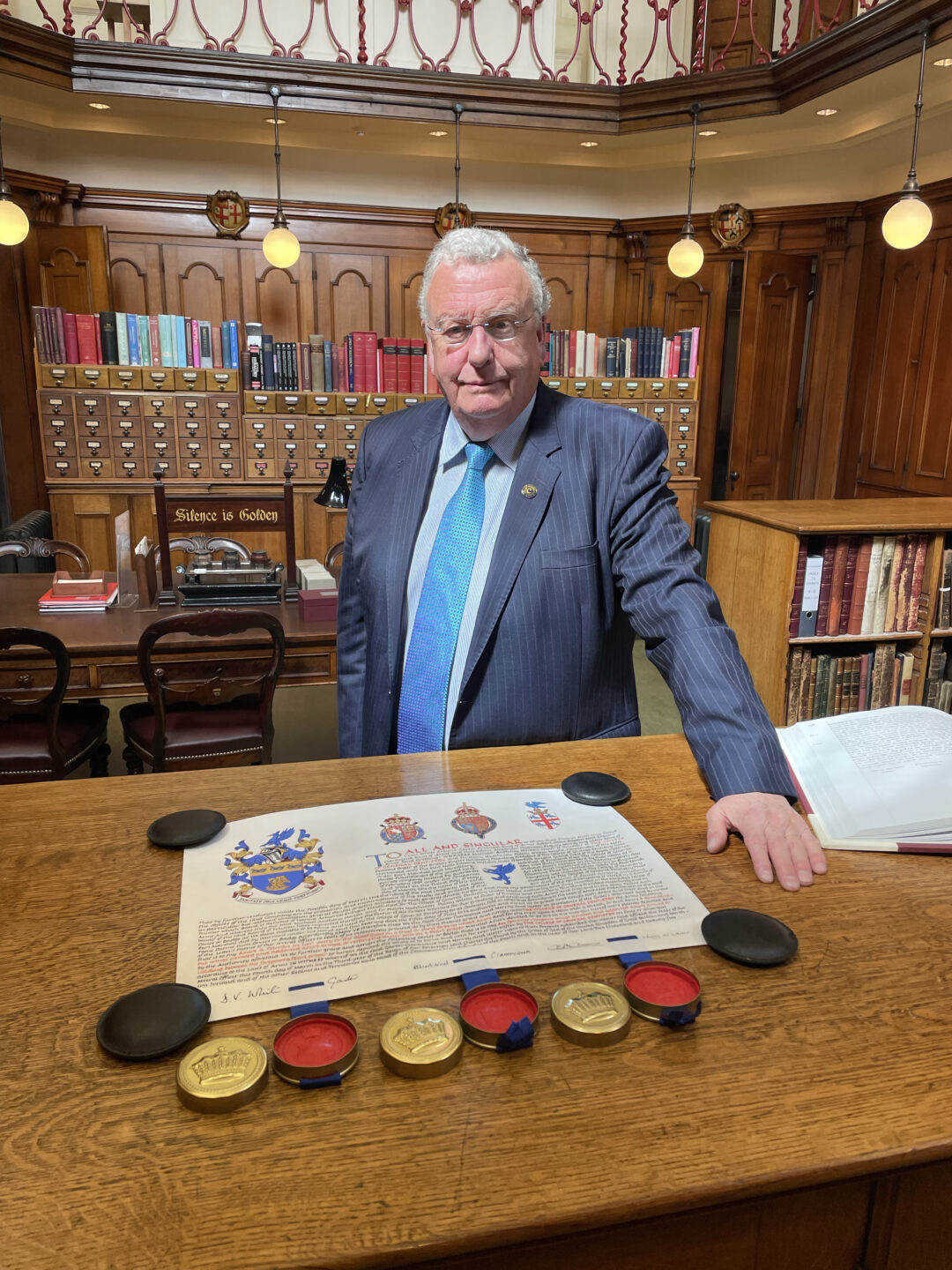Sir Nairn Wilson CBE FCGDent, President Emeritus of the College, describes the symbolism and meaning behind each of the heraldic elements in the College’s newly-granted Coat of Arms.

Sir Nairn with the Grant of Arms presented to the College on 19 May 2025
A Grant of Arms is a formal recognition bestowed by the official heraldic authority, the College of Arms, and symbolises legitimacy and identity. Dating back centuries, grants of arms are typically conferred upon those organisations and individuals which meet established criteria of permanence, achievement, and contribution in their respective fields, and the College (intended Royal College) of General Dentistry has recently been so honoured.
The process leading up to the Grant of Arms involved the design of an ‘Armorial Achievement’ – colloquially known as a Coat of Arms – which includes various heraldic elements such as a shield, crest and motto, each imbued with symbolic meaning. These elements collectively encapsulate the ethos and aspirations of the organisation.

The Armorial Achievement (Coat of Arms) of the College of General Dentistry
The shield – the centrepiece of the heraldic achievement – has a blue background (field). The central feature of the shield is a golden pelican ‘in her piety’ – feeding a brood of three chicks in a nest, with the chicks pecking and wounding their mother’s breast, anxious to be fed. The principal meaning evoked by the pelican is caring: first and foremost for patients, secondly for early career oral healthcare professionals and students, and thirdly for the moral compass of the profession – hence the three chicks.
The pelican is surmounted by a golden band (‘chief’) displaying three snakes, each knotted (‘nowy’). The knotted snakes symbolise unity within the profession, unity with other health professions and unity of purpose in healthcare, emphasising the importance of oral health to general health and wellbeing. Together the pelican and snakes symbolise trust and reliance.
The crest on top of the helm features the upper half of an ‘opinicus’, resting its right (‘dexter’) foreleg on a giant pearl. The traditional opinicus, derived from the crest of the Company of Barber Surgeons, which was incorporated in 1462, is a symbol of influence, and of strength in diversity and inclusivity within the College. The pearl signifies wisdom in the art and science of dentistry. The opinicus, rarely included in heraldic achievements, resembles a dragon in the forepart and in the wings, with a beaked head and ears similar to those of a griffin. The hind part and the legs resemble those of a lion. The tail is similar to that of a bear.
The mantling around the shield and helm displays the livery colours of the College – azure blue and gold.
Below the shield sits the College motto: Sanitate oris venit fortitudo – Strength through oral health – strength for patients and strength for the profession.

The College of General Dentistry badge
The badge of the College is a proud and bold opinicus in College blue and rampant posture (standing on one hind foot in profile, with raised wings and tail), holding the giant pearl of wisdom, as featured in the crest of the Arms, between its clawed forepaws.
The Grant of Arms adds to the legitimacy of the College, which is now firmly part of the healthcare establishment, and is considered to be an important step towards eligibility for the granting of a Royal Charter – a priority for the College in its further growth and development. The College is only the ninth dental organisation in the UK, Australia or New Zealand to have receive a Grant of Arms, and will now start making use of its Arms and badge in, for example, a re-design of diploma certificates and the introduction of College regalia.
The full text of the Grant of Arms can be read here.
This abridged article is presented with the kind permission of the Dental Historian, the journal of the Lindsay Society, a membership organisation which promotes interest, study and research into the history of dentistry and brings together people who share these interests.
The version of record (‘Making history: The grant of arms to the College of General Dentistry’) is available in the Dental Historian, volume 70 (2025), issue 2.


